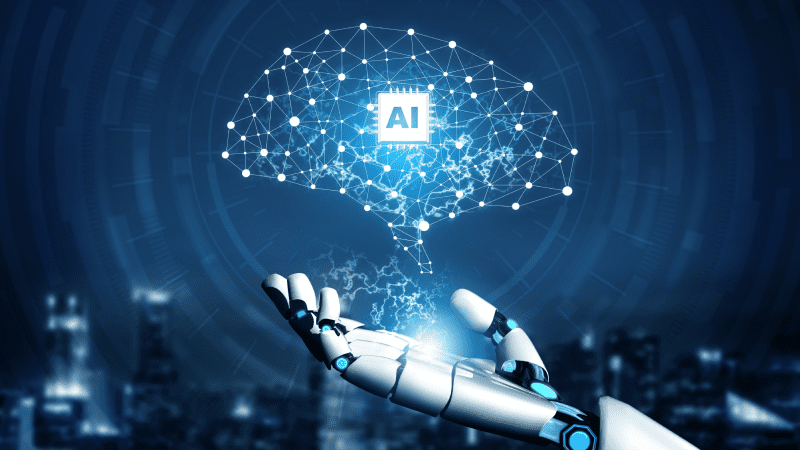
Digital Growth vs. Environmental Stewardship
Insights from the UNCTAD Report (Part 1/2)
This month, The UN Commission for Trade and Development released its report on the Digital Economy.
Centre for Trustworthy Technology

Stanford University’s Institute for Human-Centered Artificial Intelligence (HAI) reported an unprecedented year for the industry in the 2024 AI Index Report. The report has become a critical resource for researchers, policymakers, and industry leaders seeking to understand the industry’s rapid advancements and broader cultural implications of AI. This blog with cover the key takeaways and provide additional insights offered in the report, which can be read in full here: https://aiindex.stanford.edu/report/
First, one of the 2024 AI Index’s most striking findings is the exponential growth of AI research and development, particularly in the United States, which leads the global community in the number of AI-related research publications. In 2023, the United States produced 61 notable AI models. Meanwhile, the European Union collectively produced 21, and China produced 15. 
Second, the Index highlighted a growing collaboration between academia and industry in AI research, indicating industry maturation and the convergence of theoretical ideas and applications. In 2023, industry research produced 51 notable machine-learning models, while academia produced 15, and industry-academia partnerships produced 21. Perhaps the research surge is fueling another key finding, which is the unprecedented increase in investment in AI startups, including for major players like OpenAI and Anthropic. The influx of capital has fueled the growth of AI companies across various highly critical sectors, including healthcare, finance, transportation, and manufacturing. In addition to private sector funding, governments are also playing an increasingly active role in AI funding, with several countries launching national AI strategies and investing heavily in its research and development.
Third, AI is starting to prove its value across several industries, including healthcare, finance, and manufacturing. In healthcare, AI is being explored for drug discovery, precision medicine, and medical imaging analysis. The spike in AI use across verticals is growing the demand for AI literacy, talent, and domain expertise. While AI surpassed human performance on several benchmarks (including image classification and visual reasoning), the clear human advantage in tasks like competition-level mathematics, visual commonsense reasoning, and planning necessitates greater human-AI symbiosis to optimize economic productivity. As organizations across industries seek to harness the power of AI, the number of AI-related job postings has surged, with AI professionals commanding high salaries. This highlights the need for comprehensive AI education and training programs to bridge this talent gap. Universities and educational institutions are responding to this demand by increasingly offering a wide range of AI programs for undergraduate studies and doctoral degrees.
Finally, the 2024 AI Index draws significant attention to the societal impact and challenges associated with the technology. These challenges include job displacement, privacy issues, high modeling and computational costs, and algorithmic bias. The report stresses the importance of responsible AI development and deployment, including ensuring accountability mechanisms and promoting fairness and non-discrimination in AI systems. In calling for due diligence and discernment in AI implementation, the report offers a comprehensive but nuanced assessment of the current state of AI. These nuances will be explored in next week’s blog, which will outline AI’s risks and evaluate risk mitigation strategies. It also quietly but decisively serves a reminder that society still has a significant journey ahead to fully harness the benefits of AI while navigating its associated risks and ethical considerations.
Stanford University’s Institute for Human-Centered Artificial Intelligence (HAI) reported an unprecedented year for the industry in the 2024 AI Index Report. The report has become a critical resource for researchers, policymakers, and industry leaders seeking to understand the industry’s rapid advancements and broader cultural implications of AI. This blog with cover the key takeaways and provide additional insights offered in the report, which can be read in full here: https://aiindex.stanford.edu/report/
First, one of the 2024 AI Index’s most striking findings is the exponential growth of AI research and development, particularly in the United States, which leads the global community in the number of AI-related research publications. In 2023, the United States produced 61 notable AI models. Meanwhile, the European Union collectively produced 21, and China produced 15.

Second, the Index highlighted a growing collaboration between academia and industry in AI research, indicating industry maturation and the convergence of theoretical ideas and applications. In 2023, industry research produced 51 notable machine-learning models, while academia produced 15, and industry-academia partnerships produced 21. Perhaps the research surge is fueling another key finding, which is the unprecedented increase in investment in AI startups, including for major players like OpenAI and Anthropic. The influx of capital has fueled the growth of AI companies across various highly critical sectors, including healthcare, finance, transportation, and manufacturing. In addition to private sector funding, governments are also playing an increasingly active role in AI funding, with several countries launching national AI strategies and investing heavily in its research and development.
Third, AI is starting to prove its value across several industries, including healthcare, finance, and manufacturing. In healthcare, AI is being explored for drug discovery, precision medicine, and medical imaging analysis. The spike in AI use across verticals is growing the demand for AI literacy, talent, and domain expertise. While AI surpassed human performance on several benchmarks (including image classification and visual reasoning), the clear human advantage in tasks like competition-level mathematics, visual commonsense reasoning, and planning necessitates greater human-AI symbiosis to optimize economic productivity. As organizations across industries seek to harness the power of AI, the number of AI-related job postings has surged, with AI professionals commanding high salaries. This highlights the need for comprehensive AI education and training programs to bridge this talent gap. Universities and educational institutions are responding to this demand by increasingly offering a wide range of AI programs for undergraduate studies and doctoral degrees.
Finally, the 2024 AI Index draws significant attention to the societal impact and challenges associated with the technology. These challenges include job displacement, privacy issues, high modeling and computational costs, and algorithmic bias. The report stresses the importance of responsible AI development and deployment, including ensuring accountability mechanisms and promoting fairness and non-discrimination in AI systems. In calling for due diligence and discernment in AI implementation, the report offers a comprehensive but nuanced assessment of the current state of AI. These nuances will be explored in next week’s blog, which will outline AI’s risks and evaluate risk mitigation strategies. It also quietly but decisively serves a reminder that society still has a significant journey ahead to fully harness the benefits of AI while navigating its associated risks and ethical considerations.

Insights from the UNCTAD Report (Part 1/2)
This month, The UN Commission for Trade and Development released its report on the Digital Economy.

In 2019, Patrick Collison (Founder and CEO of Stripe) and Tyler Cowen (Professor of Economics at George Mason University) called for a “new science of

“The structure of data governance regimes today incentive habits of passivity.”
“I am optimistic that if we connect data empowerment…

In the United States Congress, the nation’s first comprehensive federal privacy law is at major crossroads amidst debates and concerns from…

Last month, 28 countries and several industry stakeholders convened at the second iteration of the AI Safety Summit in Seoul, South Korea.

Metaphors have played a remarkable role throughout human history. They offer useful shortcuts to grasp complex concepts and create powerful images of the world and